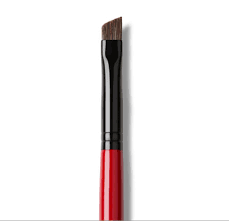INSPIRATIONS FROM THE HE(ART) OF EL SEED

I once speculated the return of an art renaissance, reminiscent of 18th century France which bore art as a defiant discourse in the face of political power. Little did I expect that it would soon surface with as much gusto on my own continent. Further up north, amid the revolutions that sparked across the Islamic world, Tunisian artists wrestled for rights to freedom of speech through art, which had long been suppressed under ex-president Ben Ali. Refusing to submit to his dictatorship, they took to the streets to exhibit and craft their art on municipal buildings and walls, as a way of reclaiming ownership of the public domain. It was the penultimate expression of democratic freedom.
While art boundaries were flouted in the north, they were yet to be addressed in the south, where the ban on public graffiti had not been lifted. On a recent visit to Cape Town the acclaimed Tunisian-Parisian graffiti artist, El Seed, addressed the issue of art, politics and freedom in South Africa. “We are not respected,” he said, saying that artists are neither acknowledged as professionals, nor as contributing members of society. And the graffiti ban is sufficient proof of this fact, failing to distinguish between aesthetics and vandalism.
Critiquing local art, El Seed said that he would have preferred to see graffiti written in an African language. He believes that artists needed to “break the hegemonic trends in art and express their culture”. El Seed’s own work embraces his linguistic roots, by combining Arabic calligraphy and graffiti. Hence it is called ‘calligraffiti’. He also incorporates ancient art into modern art forms, resulting in a hip-hop street style with a rather delightful Middle-Eastern twist. Unlike other artists, he chooses not to sign his name on any of his work. “It is not important,” he claims. “If you think about the seven Mu’allaqaat (acclaimed ancient Arabic poetry), people do not remember the names of the poets. All that remains is the message of the poets, and that is what I would like to leave behind.” His own messages vary, communicating ideas about education, politics, or love. “It’s all about the context,” he says, having exposed students from underprivileged areas in Cape Town how to harness their art skills and leave behind awe-inspiring messages such as ‘Read and Elevate Yourself’, and ‘It always seems impossible until it’s done.’ Undoubtedly, his work attests to the fact that street art can be wielded as an intellectually stimulating tool with transformative power.

Art can sway politics. And South Africa, who has the art of photography to thank for awakening the world to its plight during Apartheid, should know this best. Rather than condemning its use, politicians should use the medium as a tool to reach the youth, otherwise face the consequence of perpetual anarchic expression painted onto the very places they wish to protect.
Below:"Read to Elevate Yourself" is a collaborative work of local high school students.
Left: "It always seems impossible until it's done"

*Photography: Riz.B Photography







